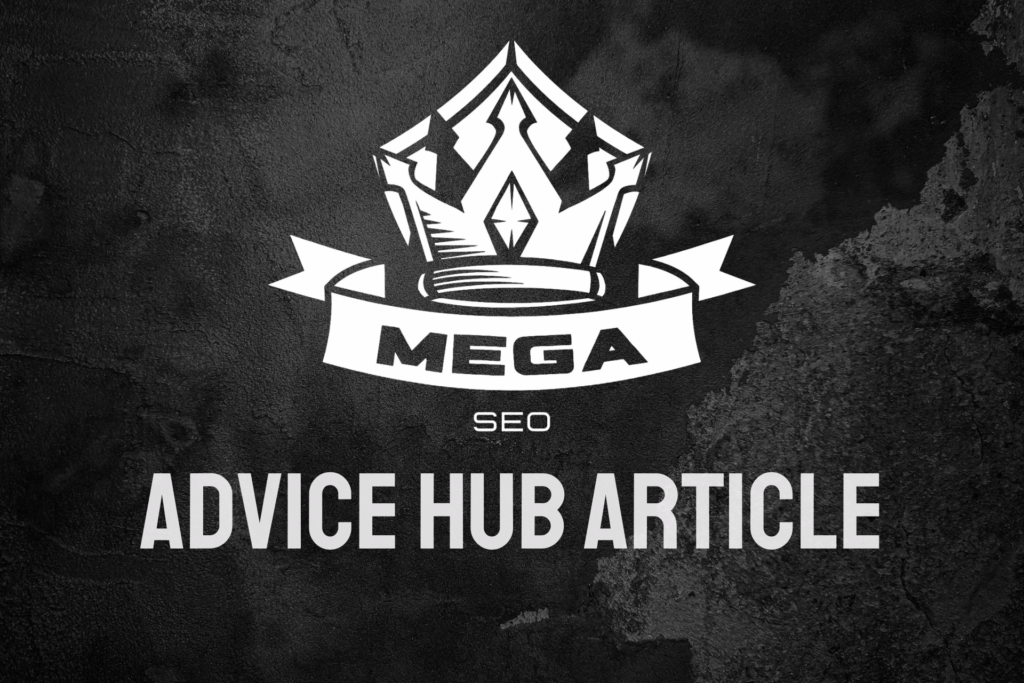Backlinks remain a crucial factor in search engine rankings, but not all links are created equal. Whilst high-quality backlinks can boost your site’s authority and visibility, low-quality or spammy links can harm your SEO efforts.
This handy off-page SEO tip will walk you through the process of identifying and disavowing bad backlinks, helping you maintain a healthy link profile and improve your search engine rankings.
What Are Bad Backlinks and Why Should You Disavow Them?
Bad backlinks are inbound links to your website from low-quality, irrelevant, or potentially harmful sources. These can include links from:
• Spammy or low-quality directories
• Link farms or networks
• Websites with unrelated content
• Sites engaged in black hat SEO practices
• Hacked or compromised websites
Search engines like Google use backlinks as a signal of a website’s authority and relevance. When your site receives links from reputable sources, it’s seen as a vote of confidence. However, bad backlinks can have the opposite effect, potentially leading to penalties or decreased rankings.
Disavowing bad backlinks is the process of telling search engines to ignore these harmful links when assessing your site. It’s a powerful tool in your SEO arsenal, but it should be used carefully and only when necessary.
How Can You Identify Bad Backlinks?
Before you can disavow bad backlinks, you need to identify them. Here are some steps to help you spot potentially harmful links:
1. Conduct a backlink audit: Use tools like Google Search Console, Ahrefs, or Moz to get a comprehensive list of your backlinks.
2. Analyse the linking domains: Look at the overall quality and relevance of the websites linking to you. Are they in your industry? Do they have a good reputation?
3. Check for unnatural anchor text: If you see an abundance of exact-match anchor text or overly optimised phrases, it could be a red flag.
4. Look for sudden spikes in backlinks: A rapid increase in links, especially from low-quality sources, can be suspicious.
5. Assess link relevance: Links from websites with content unrelated to your industry might be considered low-quality.
6. Examine link placement: Links hidden in footers, sidebars, or buried in unrelated content may be viewed negatively by search engines.
When conducting your backlink audit, it’s crucial to be thorough and methodical. Don’t rush the process, as mistakenly disavowing good links can harm your SEO efforts. If you’re unsure about your ability to accurately identify bad backlinks, consider seeking help from a professional SEO service.
What Steps Should You Take Before Disavowing Backlinks?
Before you jump into disavowing backlinks, there are several important steps you should take:
1. Attempt to remove bad links manually: Reach out to webmasters and request link removal. This should always be your first course of action.
2. Document your efforts: Keep a record of your outreach attempts. This can be useful if you need to demonstrate your efforts to search engines.
3. Wait for responses: Give webmasters a reasonable amount of time to respond and act on your requests.
4. Analyse the impact: Use tools like Google Search Console to see if the bad links are actually affecting your site’s performance.
5. Consider the risks: Disavowing links can potentially impact your rankings, so ensure you’re confident in your decision.
Remember, disavowing links should be a last resort. If you can get bad links removed naturally, that’s always the preferred option. However, if you’ve exhausted all other avenues, disavowing becomes a necessary step to protect your site’s SEO health.
How Do You Create and Submit a Disavow File?
Once you’ve identified the links you want to disavow and attempted manual removal, it’s time to create and submit your disavow file. Here’s a step-by-step guide:
1. Create a text file: Use a simple text editor to create a .txt file.
2. List the URLs or domains: Add each URL or domain you want to disavow on a separate line. Use “domain:” before a domain if you want to disavow all links from that site.
3. Add comments: You can add comments to your file by starting a line with a #. This can be useful for organising your file or adding notes.
4. Save the file: Save your text file with a clear name, such as “disavow_links.txt”.
5. Submit to Google: Go to the Google Disavow Links tool in Search Console and upload your file.
6. Monitor results: Keep an eye on your rankings and organic traffic in the weeks following submission.
It’s important to note that the disavow process can take time to show results. Google needs to recrawl the disavowed links and reassess your site, which can take several weeks or even months.
What Are Common Mistakes to Avoid When Disavowing Backlinks?
While disavowing bad backlinks can be beneficial, there are several pitfalls to avoid:
1. Disavowing too many links: Be conservative in your approach. Only disavow links you’re certain are harmful.
2. Disavowing good links: Accidentally disavowing high-quality links can harm your SEO efforts.
3. Relying solely on automated tools: While tools can be helpful, they shouldn’t replace human judgement.
4. Disavowing links before attempting removal: Always try to get links removed manually before resorting to disavowal.
5. Ignoring the impact: After disavowing links, monitor your site’s performance closely to ensure you haven’t negatively impacted your rankings.
6. Failing to keep records: Maintain detailed records of which links you’ve disavowed and why. This can be crucial for future audits or if you need to reverse any decisions.
By avoiding these common mistakes, you can ensure that your disavow efforts are effective and don’t inadvertently harm your site’s SEO performance.
How Often Should You Review and Update Your Disavow File?
Maintaining a healthy backlink profile is an ongoing process. Here are some guidelines for reviewing and updating your disavow file:
1. Conduct regular backlink audits: Aim to review your backlink profile at least quarterly.
2. Monitor for new bad links: Keep an eye out for any new potentially harmful links that appear.
3. Reassess disavowed links: Periodically review your disavow file to ensure all included links still warrant disavowal.
4. Update after major changes: If your site undergoes significant changes or rebranding, it’s a good time to review your backlink profile.
5. Stay informed about algorithm updates: Major search engine algorithm changes may affect how backlinks are evaluated, potentially requiring updates to your disavow strategy.
Remember, the goal is to maintain a natural and high-quality backlink profile. Regular reviews and updates to your disavow file are essential for long-term SEO success.
Protect Your Site’s SEO Health with Expert Backlink Management
Disavowing bad backlinks is a crucial skill for maintaining your website’s SEO health. By following this guide, you’ll be well-equipped to identify harmful links, create and submit a disavow file, and avoid common pitfalls in the process.
Our team of experienced SEO professionals based in Wigan can help you navigate the complexities of backlink audits, disavowal, and ongoing link profile management. We’re committed to helping UK businesses improve their search engine rankings through ethical, effective SEO practices.



